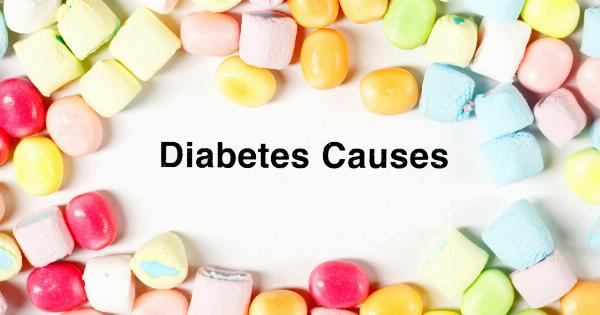Body fat is typically seen as something negative, associated with weight gain, health problems, and an undesirable appearance. However, it is important to understand that body fat is not entirely bad.
In fact, it plays crucial roles in our overall health and well-being. This article explores the good, the bad, and the necessary aspects of body fat, shedding light on its importance and how to maintain a healthy balance.
Understanding Body Fat
Body fat, also known as adipose tissue, is a component of the human body that serves multiple functions. It consists of adipocytes, which are specialized cells that store energy in the form of fat.
These fat cells are distributed throughout the body, both directly beneath the skin (subcutaneous fat) and around vital organs (visceral fat).
The Good: Essential Fat and Its Functions
Essential fat refers to the minimum amount of body fat required for normal physiological functioning. This type of fat is essential for various vital bodily functions, including:.
1. Insulation and Protection
Body fat acts as an insulator, helping to regulate body temperature by providing a layer of protection against external temperature changes.
Additionally, subcutaneous fat functions as a cushion, protecting organs and tissues from physical shock and trauma.
2. Energy Storage and Fuel
Fat serves as a valuable energy source during times of nutrient scarcity or increased energy demands.
It provides much-needed fuel to support bodily functions and is particularly useful during prolonged periods of fasting, intense physical activity, or illness.
3. Hormone Regulation
Adipose tissue plays a critical role in hormone regulation. Fat cells produce hormones, such as leptin, which helps regulate appetite and energy balance.
Adipose tissue also produces adiponectin, a hormone involved in insulin sensitivity, glucose metabolism, and inflammation control.
4. Vitamin Absorption
Some vitamins, including vitamins A, D, E, and K, are fat-soluble, meaning they require the presence of fat in order to be absorbed and utilized by the body.
Adequate body fat levels are necessary for the absorption and utilization of these essential vitamins.
The Bad: Excess Body Fat and Health Risks
While some amount of body fat is necessary and beneficial, excess body fat can have detrimental effects on overall health.
The accumulation of excess body fat, particularly visceral fat (fat around the abdominal organs), has been strongly linked to various health risks, including:.
1. Obesity
Obesity occurs when excess body fat reaches a level that significantly increases the risk of health problems. It is typically assessed using body mass index (BMI), a measure of body fat based on height and weight.
Obesity is associated with a higher risk of developing chronic conditions, such as heart disease, type 2 diabetes, certain cancers, and respiratory disorders.
2. Cardiovascular Disease
Excess body fat, particularly visceral fat, has been associated with an increased risk of cardiovascular diseases, including heart disease, high blood pressure, stroke, and atherosclerosis.
These conditions can have severe consequences on heart health and overall well-being.
3. Metabolic Disorders
High levels of body fat contribute to metabolic disorders, such as insulin resistance, type 2 diabetes, and metabolic syndrome.
Excess fat can disrupt insulin production and impair glucose metabolism, leading to difficulties in maintaining stable blood sugar levels.
4. Joint Problems
The additional weight caused by excess body fat places increased pressure on the joints, particularly in weight-bearing areas such as the knees and hips.
This can lead to joint problems, such as osteoarthritis, and increase the risk of musculoskeletal injuries.
Maintaining a Healthy Balance
Maintaining a healthy balance of body fat is essential for overall wellness. Here are some tips to achieve and sustain a healthy body composition:.
1. Balanced Diet
Follow a balanced diet that includes a variety of nutrient-dense foods, focusing on quality protein, healthy fats, whole grains, fruits, and vegetables. Limit the consumption of processed foods, refined sugar, and unhealthy fats.
2. Regular Physical Activity
Incorporate regular physical activity into your routine, including both cardiovascular exercise and strength training.
Aim for at least 150 minutes of moderate-intensity aerobic activity or 75 minutes of vigorous-intensity aerobic activity each week, along with muscle-strengthening activities twice a week.
3. Portion Control
Practice portion control to ensure you’re consuming an appropriate amount of calories for your body’s needs.
Pay attention to portion sizes and avoid overeating, as excessive calorie intake can lead to weight gain and an increase in body fat.
4. Stress Management
Chronic stress can contribute to weight gain and interfere with healthy fat regulation. Practice stress management techniques, such as meditation, yoga, or engaging in hobbies, to reduce stress levels and promote overall well-being.
5. Adequate Sleep
Getting sufficient and quality sleep is crucial for maintaining a healthy weight and body fat levels. Aim for 7-9 hours of uninterrupted sleep each night to support proper hormonal regulation and overall metabolic health.
Conclusion
Body fat, though often perceived as undesirable, is a necessary component of our bodies. Understanding its beneficial and harmful aspects is crucial for achieving and maintaining optimal health.
By adopting a balanced diet, regular physical activity, stress management, and sufficient sleep, it is possible to maintain a healthy balance of body fat and promote overall wellness.


























